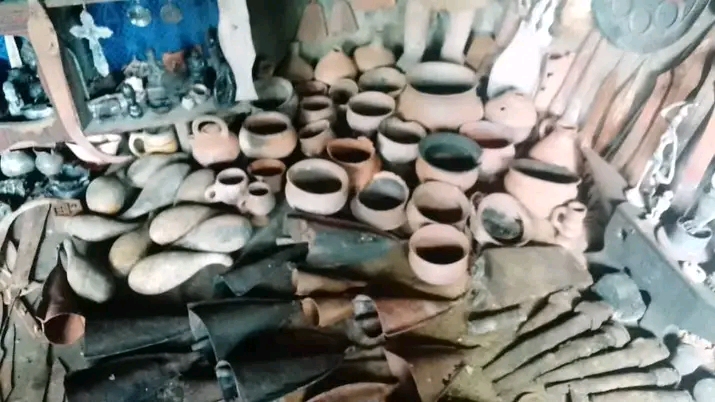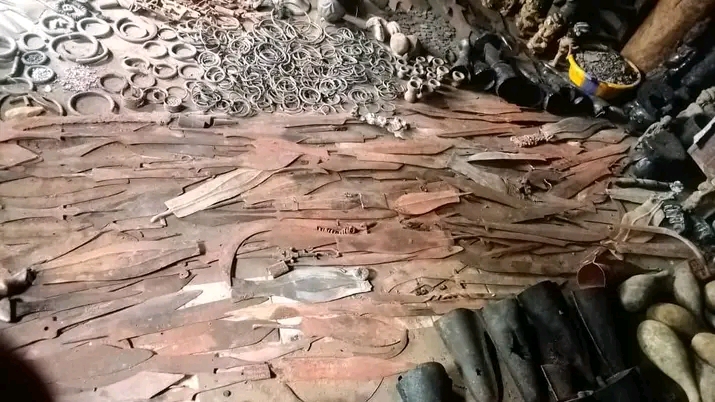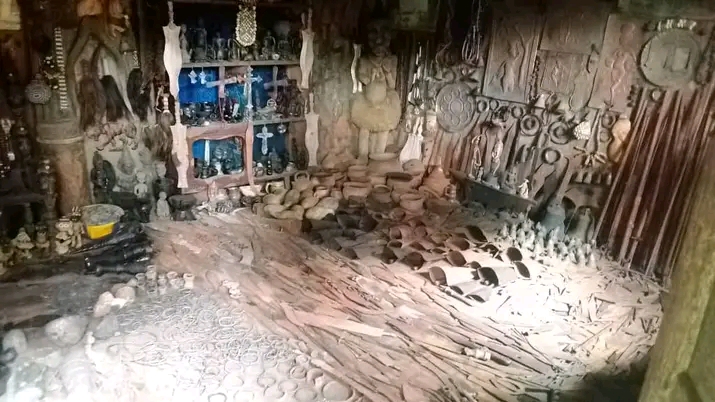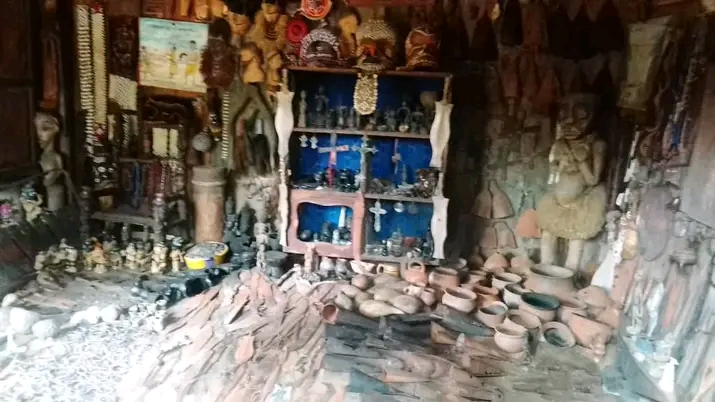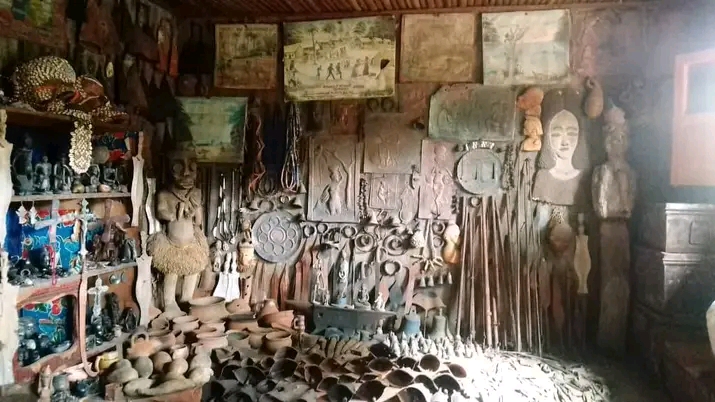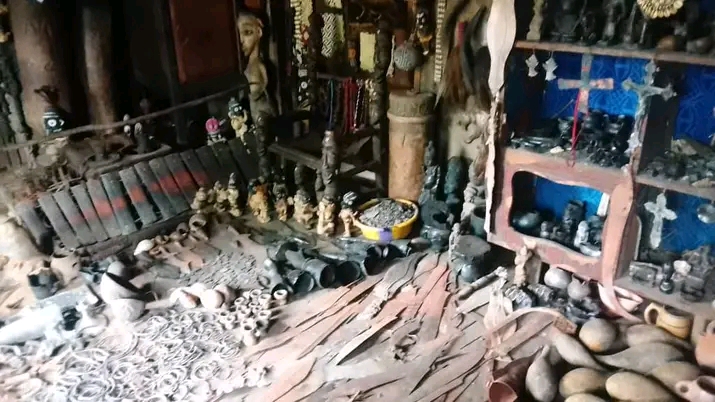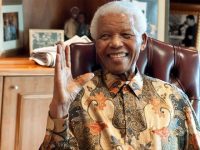Focus on Africa decided to interview Cyrie Sendashonga, the widow of the late Rwandan Minister…
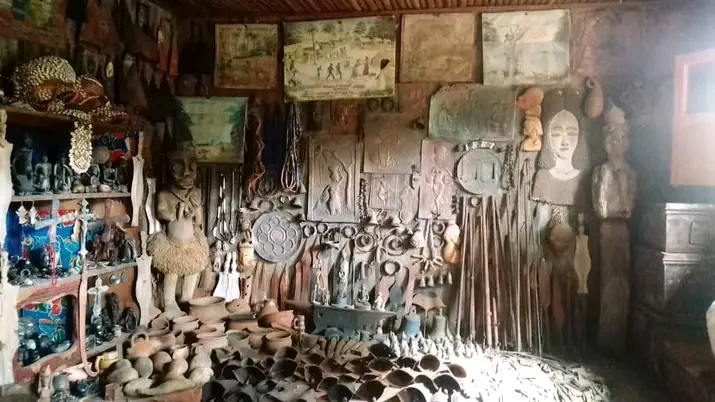
DRCongo, the Gungu Museum, a phoenix reborn from its ashes
A beacon of culture
Located in the province of Kwilu, the Gungu Museum on Congolese art and culture, and more particularly on the Pende people, is a true hidden gem in the heart of the Democratic Republic of Congo. Unfortunately, two and a half years ago it was largely destroyed by arson, but its founder and director, Aristotle Lwange Kibala, still speaks of it in the present tense, not least because it is: the museum is always there, even if he is inside his house. Founded in 1986 by Lwange Kibala, the Gungu Museum has become the largest and most important private museum in the country, attracting visitors from around the world. He came to own a collection of 25,000 works, including the famous masks of the Pende tribe: an invaluable treasure of Congolese art and culture.
Arson, a deep wound
On the night of November 4 to 5, 2021, an arson attack ravaged the museum. The flames devour much of the collection, leaving behind only rubble and a feeling of deep sadness and desolation. The news went around the world, sparking indignation and emotion.
Despite the pain and irreparable loss, Aristotle Lwange Kibala did not give up. Driven by unwavering tenacity and boundless love for the culture of his country, he decided to resurrect the museum from its ashes. With the help of a few collaborators, he undertook to excavate and save the smoking ruins: a difficult and demanding job, but among the charred rubble, he managed to recover some 10,000 objects, including sculptures, masks, artifacts and everyday objects. A work carried out with dedication and patience, to bring fragments of history and cultural identity back to life.
A new museum, an open challenge
In June 2023, “Focus on Africa” interviewed (in Italian) director Lwange Kibala, who told how the Gungu Museum was reopened to the public inside his private house and how, despite its small size and difficulties financial, the “new” museum is a symbol of hope and rebirth.
The tenacity of Kibala and his collaborators, however, comes up against the harsh reality: the museum has received no financial support from public or private institutions, Congolese or foreign; a lack of support that makes the future of the museum uncertain and full of unknowns.
This is why we heard again from Aristotle Lwange Kibala, who spoke to us about the situation and prospects of the museum:
Director, how many art objects are currently available at the Museum?
Currently, the Gungu Museum collection has more than 16,000 works of art, divided between 90% traditional arts and 10% modern arts. This is a truly significant heritage, which represents a precious testimony to the culture and history of Congo.Where is this collection currently located?
Pending a permanent home, the collection is currently stored in the living room of my family home. Despite the logistical difficulties, this temporary arrangement nevertheless makes it possible to keep the collection alive and make it accessible to the public.Are visitors coming?
Yes, the museum is open to the public and regularly welcomes visitors, both local and foreign. Among the last to visit us were Russian tourists, a sign that interest in Congolese culture is also growing internationally.Has the Museum succeeded in resuming work with schools?
Yes, the museum has resumed its collaboration with schools in the region, notably with the Gungu Institute of Higher Education (ISP Gungu) and with several secondary and primary schools.Are the students happy?
The students are very excited to visit the museum and learn about the history and culture of the country. The collection offers them a unique opportunity to learn in a direct and engaging way.How do they react to art objects from their own culture?
The students are fascinated: through art objects, they can discover people’s ancestral origins and deepen their own identity.Are there live museographic occasions, that is, occasions in which masks and objects are used in performances or rites?
Yes, the museum strongly believes in the importance of keeping local culture and traditions alive. It is for this reason that it regularly organizes events and shows in which the masks and art objects from the collection are used in their original form, giving life to representations and rituals that involve the entire community.Before the fire, the museum had participated in various initiatives of international importance, such as in 2009 for the sixth edition of Africa-Tervuren in Brussels and in 2019 on the occasion of reopening of the National Museum of Kinshasa, thanks to the contribution of South Korea. In both cases, the museum had the opportunity to present its collection to a large and diverse audience, contributing to making Congolese culture known beyond national borders.
A cry of hope, a call to responsibility
The Gungu Museum is more than just a museum. It is a symbol of resistance against destruction and oblivion, a glimmer of hope for the future of the DRC. Its history teaches us that culture is a precious asset to be preserved and defended, a bridge between the past, present and future, a vital element for the growth and development of every society. The rebirth of the Gungu Museum from the ashes of the fire is a promise of redemption for the Congo and for all of Africa: an example of how culture can be a force for rebirth and development, an engine of positive change for a better future.
Thanks to this new interview, Mr. Kibala offers us a significant insight into his reality and the challenges ahead: despite the difficulties, the museum remains a fundamental reference for Congolese culture and a symbol of hope for the future of the country, but, more broadly, represents an example of how culture can be a force for rebirth and development.
The story of the Gungu Museum is one of courage, passion and hope; it’s proof that even in the face of tragedy, tenacity and love of culture can make a difference. But it is also a call for responsibility: institutions and the international community cannot ignore the inestimable value of Congolese cultural heritage and the fundamental role that museums like that of Gungu play in promoting culture and social cohesion. .
– – –
Below, a photo gallery of the Gungu Museum, in the images sent by Mr. Giheta Kibala, son and collaborator of the director:


